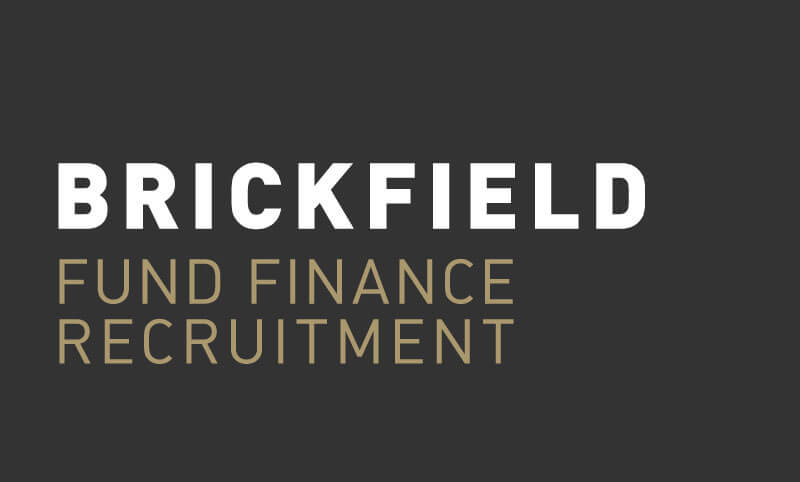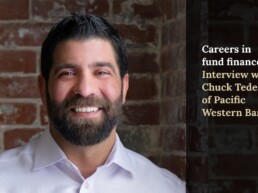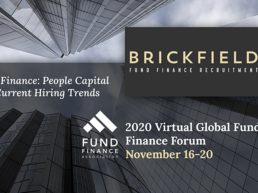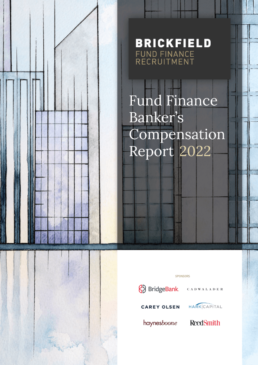
In our final Meet The Press trio of interviews, Brickfield heads to New York to meet Graham Bippart of Private Funds CFO.
Graham is senior editor of two PEI Group publications, including Private Funds CFO, which covers the fund finance industry for its readership of borrowers. He has 15 years of experience reporting on international capital markets and related topics, among them securitisation, bank capital, over-thecounter derivatives, corporate bonds and loans, and international financial regulation and policy. Before joining PEI Group in 2019, he wrote and edited for Euromoney magazine in London, and currently lives in Brooklyn.
What was the beginning of your involvement in the fund finance market?
Well, it sort of started with a bang… or more like a loud crash. It was during COVID, when I reported a story that, let’s say, aroused the interest of the fund finance market, as it included an on-the-record source saying a client’s fund had experienced a sub line default (the Fund Finance Association later said it could find no instance among any of its members that there was one. Though I still stand by the source, who took a lot of guff for it. It was probably a technical default that the GP avoided letting become a contractual one, and it was a small LP, so finding a way to cure it would likely have been very doable.)
In the aftermath of that article, I found that sub lines and NAV were naturally familiar to me, given my experience reporting on asset-backed loans and securitisations, and financial and corporate loans and bonds. But the market was fairly obscure even to participants, being so bilateral and business held so close to the chest. So, I set out to write what would end up being two very long series of stories mapping out the state of the sub line and NAV markets. I did it for my readers, mainly – CFOs of mainly mid-market PE managers – but I was also itching for a capital market to report on again! My guess was that, with sub lines appearing, at the time, to be in the process of becoming part of the nuts and bolts of running a fund, and the use cases evolving for both sub lines and NAV amid liquidity stress and shocks to valuations, the market would soon go through a lot of evolution in a short period.
So do you think we can call the fund finance market “mature” yet?
What we’re seeing is, I think, sort of the early-to-middle stage of the maturity of the market as I see it. There are products and best practices are still being developed, various parties still trying to understand where the long-term opportunities lie, and institutional investors who still don’t entirely understand fund finance.
But we might be further along in the market’s “maturity” if we frame in it terms of size, perhaps. After the likes of the FFA have spent quite a long time developing this market, it’s really taken off in recent years, so we may be approaching the saturation points for total dollar volume in some markets. It’s hard to say, because fund finance has moved beyond just private equity into other private markets asset classes.
This could just be the pedantic writer in me, but I do think that in order to further the education of the market, there needs to be a rethink in the taxonomy of various products. This has started somewhat with the separation of concentrated NAV from diverse NAV for example, but there’s further to go there I believe. I will do my absolute best to change people’s minds about calling collateralised fund obligations ‘CFOs”, not just because the market isn’t doing itself any favors reviving three-letter acronyms that still rattle some nerves, but because it’s deeply confusing for my CFO readers. We try to call them fund interest ABS at PFCFO!
What grabs your attention the most these days?
It appears a lot of banks are stepping into the concentrated NAV market, since they are treated with extremely punitive regulatory capital requirements under Basel 3.
There were a fair amount of regional banks at this year’s Fund Finance Association event in Miami, and banks like Deutsche Bank, Goldman Sachs and others now have “capital solutions” desks, that aim to provide fund financing for the entire fund lifecycle – from sub-lines to NAVs on continuation vehicles, for example, And, from what I hear, they’re doing the NAV loan part of the business by structuring them as A-B splits or otherwise backleveraging them to make the trade profitable despite risk-weighted asset requirements.
And I think the use of securitisation technology is interesting, of course. Goldman Sachs appears to have done a true securitisation of subscription credit lines, which many people said was impossible. Other securitisation technologies are used and explored as a means to exit into the capital markets or obtaining liquidity. I think there’s a lot of room for experimentation and development in that market.
What’s looming largest on the horizon for fund finance from your perspective?
The private equity industry is here to stay and will continue to expand, but the medium- to longterm future is much more uncertain than in the past. The growth of an industry somewhat depends on the growth of its biggest user base – in this the private equity market – and fundraising has been very difficult for some time now, and geopolitical and macroeconomic uncertainties are threatening to delay a recovery in the dealmaking and exits that ultimately determine appetite for new funds.
The PE market expanded largely on the back of increasing multiples driven by low interest rates, and that era is, probably, over, so I think there may be a secular decline in activity overall in that market.
But opportunities will increase for the likes of lending to continuation vehicles, for example, and, as I said, other asset classes are increasingly tapping fund finance. People tend to think of the phrase “financial engineering” as describing something evil, which I don’t agree with. It’s at the very heart of our fractional reserve banking system. But innovations via financial engineering will, I think, be absolutely necessary for the successful management of various assets in a normalised interest rate environment, and that will be good for the fund finance industry.
As a journalist, you are continuously doing research. What are the best sources – apart from your own of course – for good analysis and information on fund finance?
Cadwalader’s Fund Finance Friday newsletter is a must-read. And of course, Brickfield does great work on the talent market, and I’m not just saying that because you’re interviewing me!
- Our sincere thanks to Graham Bippart for the interview.
Brickfield Recruitment works with leading financial institutions in sourcing the very best fund finance talent. If you are interested in finding out more contact Rory Smith at Brickfield Recruitment on +44 7800 963 594 or at rory@brickfieldrecruitment.com.




